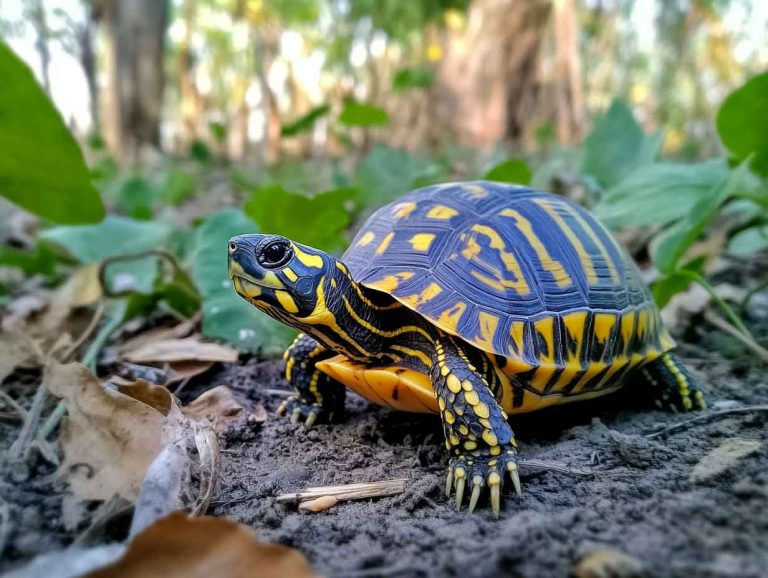Do Sea Turtles Bite People? Are They Aggressive? Turtle Facts
Hey there, turtle enthusiasts! If you’ve ever been near the ocean and spotted a sea turtle gliding gracefully through the water, you’ve probably wondered about their temperament. Are these majestic creatures as gentle as they seem, or could they snap at you with a bite? As someone who’s spent time observing these incredible animals, I’m…
Hey there, turtle enthusiasts! If you’ve ever been near the ocean and spotted a sea turtle gliding gracefully through the water, you’ve probably wondered about their temperament. Are these majestic creatures as gentle as they seem, or could they snap at you with a bite? As someone who’s spent time observing these incredible animals, I’m here to share everything I’ve learned about sea turtles, their behavior, and whether they’re likely to bite or get aggressive. Let’s dive in!
Do Sea Turtles Bite?
I’ll get straight to the point: yes, sea turtles can bite, but it’s not something you need to lose sleep over. Sea turtles, like green turtles, loggerheads, or hawksbills, aren’t out looking for trouble. They’re generally peaceful creatures, spending their days munching on seagrass, jellyfish, or sponges, depending on the species. However, they do have strong, sharp beaks that they use to chomp through their food, and those beaks can deliver a bite if they feel threatened.
Unlike some land turtles, sea turtles don’t have teeth. Instead, their beaks are designed to crush and tear their meals. For example, a loggerhead’s powerful jaws can crack open crabs and mollusks, while a green turtle’s serrated beak is perfect for slicing through seagrass. If a sea turtle feels cornered or scared, it might use that beak to defend itself. But here’s the good news: bites are rare, and sea turtles usually prefer to swim away rather than confront anyone.
The Bite Mechanism
Let me paint a picture for you. Imagine you’re snorkeling, and you get a bit too close to a sea turtle. If it feels threatened, it might give a quick snap as a warning. Their bite isn’t venomous, and it’s not as powerful as, say, a snapping turtle’s, but it can still hurt. The bite force of a sea turtle varies by species—loggerheads, for instance, have a stronger bite than leatherbacks due to their diet of hard-shelled prey. A bite might feel like a sharp pinch or, in rare cases, cause a bruise or small cut.
What’s more, sea turtles don’t have a “bad attitude.” They’re not aggressive by nature, but they’re wild animals, and wild animals have instincts. If you respect their space, the chances of a bite are incredibly low. I’ve been around sea turtles plenty of times, and I’ve never had one so much as give me a grumpy look!
Reasons Why Sea Turtles Might Bite You
So, why might a sea turtle decide to nip at you? Here are a few scenarios I’ve come across or heard about that could lead to a bite:
1. Feeling Threatened or Cornered
The number one reason a sea turtle might bite is self-defense. If you swim too close, try to touch them, or block their path to the surface (they need to breathe air, after all!), they might feel trapped. In those moments, a quick snap is their way of saying, “Back off, buddy!” I always remind myself to give them plenty of room to move freely.
2. Mistaking You for Food
This one’s more common with curious turtles. If you’re holding food or wearing shiny jewelry that looks like a tasty jellyfish, a sea turtle might mistake your fingers or toes for a snack. I’ve heard stories of turtles gently nibbling on divers’ gear, thinking it’s something edible. It’s not aggression—just a case of mistaken identity!
3. Stress from Human Interaction
Sea turtles are sensitive to their environment. Crowded beaches, loud noises, or too many people in the water can stress them out. A stressed turtle is more likely to act defensively. I’ve noticed that turtles in heavily touristed areas sometimes seem a bit more skittish, so I always try to keep my distance and stay calm.

Can a Sea Turtle Bite Off Your Finger or Toe?
Now, I know what you might be thinking: “Could a sea turtle chomp off a finger or toe?” Let me put your mind at ease. No, sea turtles can’t bite off your finger or toe. Their beaks are strong, but they’re not designed for that kind of damage. At worst, a bite might cause a painful pinch, a bruise, or a minor cut if it breaks the skin. Compare that to something like an alligator snapping turtle, which could do serious harm, and sea turtles are pretty tame.
That said, I always remind myself that even a small bite can be risky. Sea turtles, like many aquatic animals, can carry bacteria like Salmonella in their mouths. If a bite breaks the skin, there’s a slight chance of infection, especially if it’s not cleaned properly. Kids, with their smaller fingers, might feel the pinch a bit more, but serious injuries are extremely rare.
What Happens When a Sea Turtle Bites?
If a sea turtle does bite you, don’t panic—it’s not the end of the world! In most cases, the bite is a quick warning snap, and the turtle will let go almost immediately. The pain is usually mild, like a sharp pinch, and fades within a few minutes. If the bite doesn’t break the skin, you’re likely in the clear, but it’s still smart to clean the area.
If the bite does break the skin, there’s a small risk of infection due to bacteria. You might notice redness, swelling, or discomfort. In rare cases, Salmonella infection could lead to symptoms like fever, stomach cramps, or diarrhea, which would need medical attention. I’ve never had this happen to me or anyone I know, but it’s good to be cautious.
What To Do If a Sea Turtle Bites You
If you’re unlucky enough to get nipped by a sea turtle, here’s what I’d do:
- Stay Calm: Don’t yank your hand away or try to pull the turtle off. That could scare it and make it clamp down harder. Most turtles release their grip quickly if you stay still.
- Clean the Area: If the bite breaks the skin, rinse it thoroughly with clean water for several minutes. Use mild soap or a disinfectant to reduce the risk of infection.
- Monitor for Infection: Keep an eye on the bite for signs of redness, swelling, or warmth. If you start feeling feverish or notice other symptoms, it’s time to see a doctor.
- Seek Medical Help if Needed: For deeper bites or signs of infection, a doctor might prescribe antibiotics or apply a topical ointment. They’ll likely cover the area with a sterile bandage to keep it clean.
Most bites don’t require a doctor’s visit, but I always err on the side of caution and clean the area well, just in case.
Tips To Avoid Getting Bitten by a Sea Turtle
I’ve learned a few tricks over the years to keep my interactions with sea turtles safe and bite-free. Here are my top tips for you:
1. Keep Your Distance
The best way to avoid a bite is to give sea turtles plenty of space. I follow the “look, don’t touch” rule when I’m snorkeling or diving. Staying a few feet away lets them feel safe and reduces the chance of a defensive snap.
2. Avoid Feeding Them
Feeding sea turtles might seem fun, but it can make them associate humans with food, increasing the risk of a nibble. Plus, it’s not great for their health or natural behavior. I stick to watching them forage naturally—it’s just as amazing!
3. Be Mindful of Your Gear
Shiny objects, like watches or rings, can look like food to a curious turtle. I try to keep my gear tucked away or opt for non-reflective accessories when I’m in the water with turtles.
4. Stay Calm and Move Slowly
Sudden movements can startle a sea turtle. When I’m near one, I move slowly and avoid splashing. It keeps the turtle relaxed and makes for a better experience for both of us.
FAQs
I get a lot of questions about sea turtles, so let me answer some of the most common ones you might have:
1. Do Sea Turtles Have Teeth?
Nope, sea turtles don’t have teeth! Instead, they have sharp, beak-like mouths that are perfect for their diet. For example, green turtles have serrated beaks for cutting seagrass, while loggerheads have strong jaws for crushing crabs. These beaks can still deliver a pinch, but they’re not as scary as teeth might sound.
2. Are Sea Turtles Dangerous to Swim With?
Not really! Sea turtles are generally docile and prefer to avoid humans. As long as you keep your distance and don’t provoke them, swimming near sea turtles is safe and one of the most magical experiences you can have. I’ve swum with them many times, and it’s always a highlight!
3. How Long Do Sea Turtles Live?
Sea turtles are survivors! With the right conditions, they can live for decades—some species, like green turtles, can reach 70 years or more. Their long lives make it even more important to protect them and their habitats.
Final Words
So, there you have it, folks! Sea turtles can bite, but they’re not aggressive by nature. They’re gentle giants of the ocean, more interested in munching on their favorite foods than snapping at you. As someone who loves watching these creatures in their natural habitat, I can tell you that respecting their space is the key to safe, amazing encounters. Keep your distance, move slowly, and avoid tempting them with food or shiny objects, and you’ll likely never have to worry about a bite.
If you do get nipped, don’t stress—just clean the area well and monitor it. Most importantly, let’s all do our part to protect these incredible animals by keeping their oceans clean and giving them the respect they deserve. Have you had a sea turtle encounter you want to share? Drop a comment below, and let’s chat about these awesome creatures!
If you’re curious about other turtles, check out my articles on whether box turtles or red-eared sliders bite.







